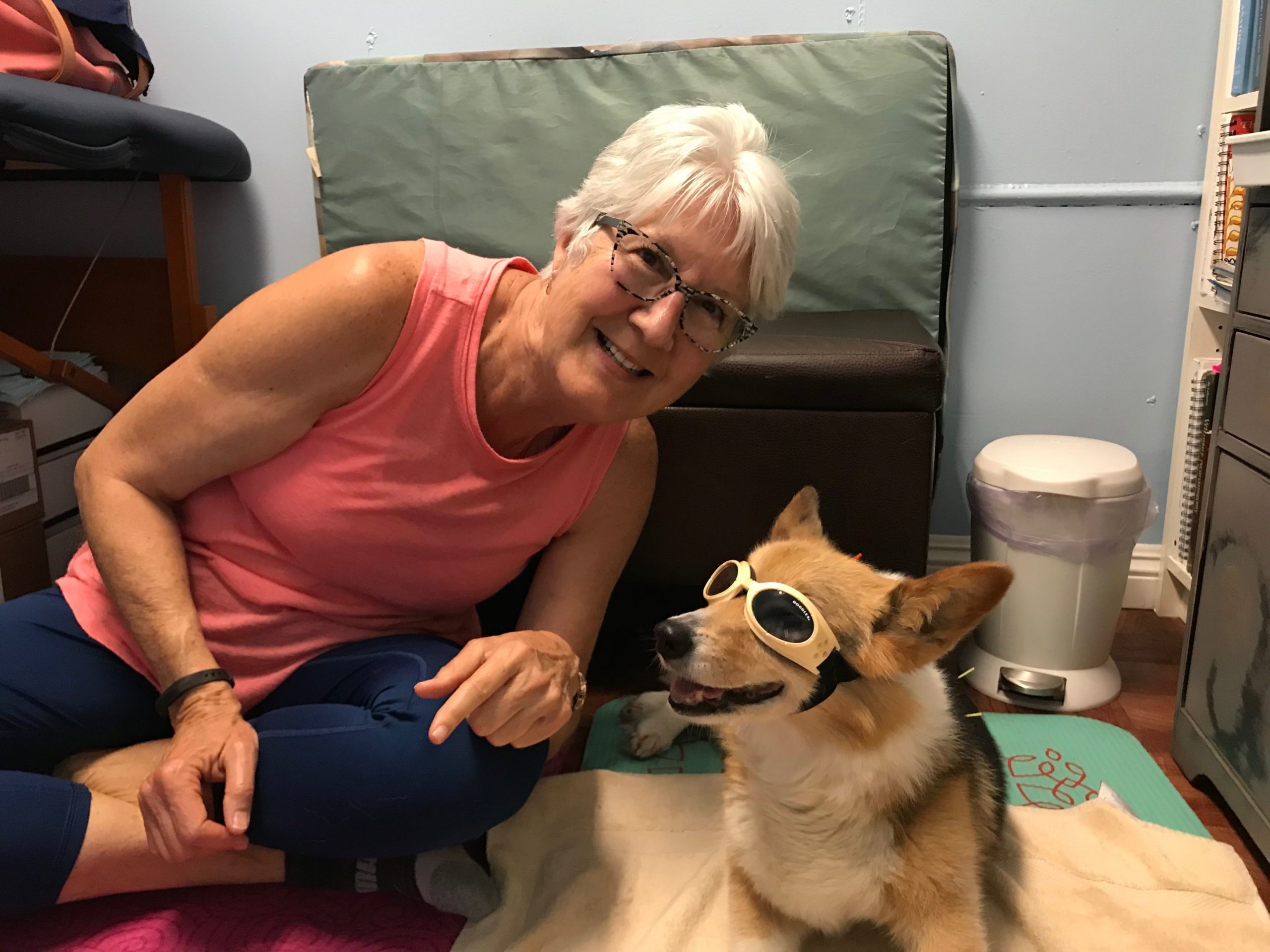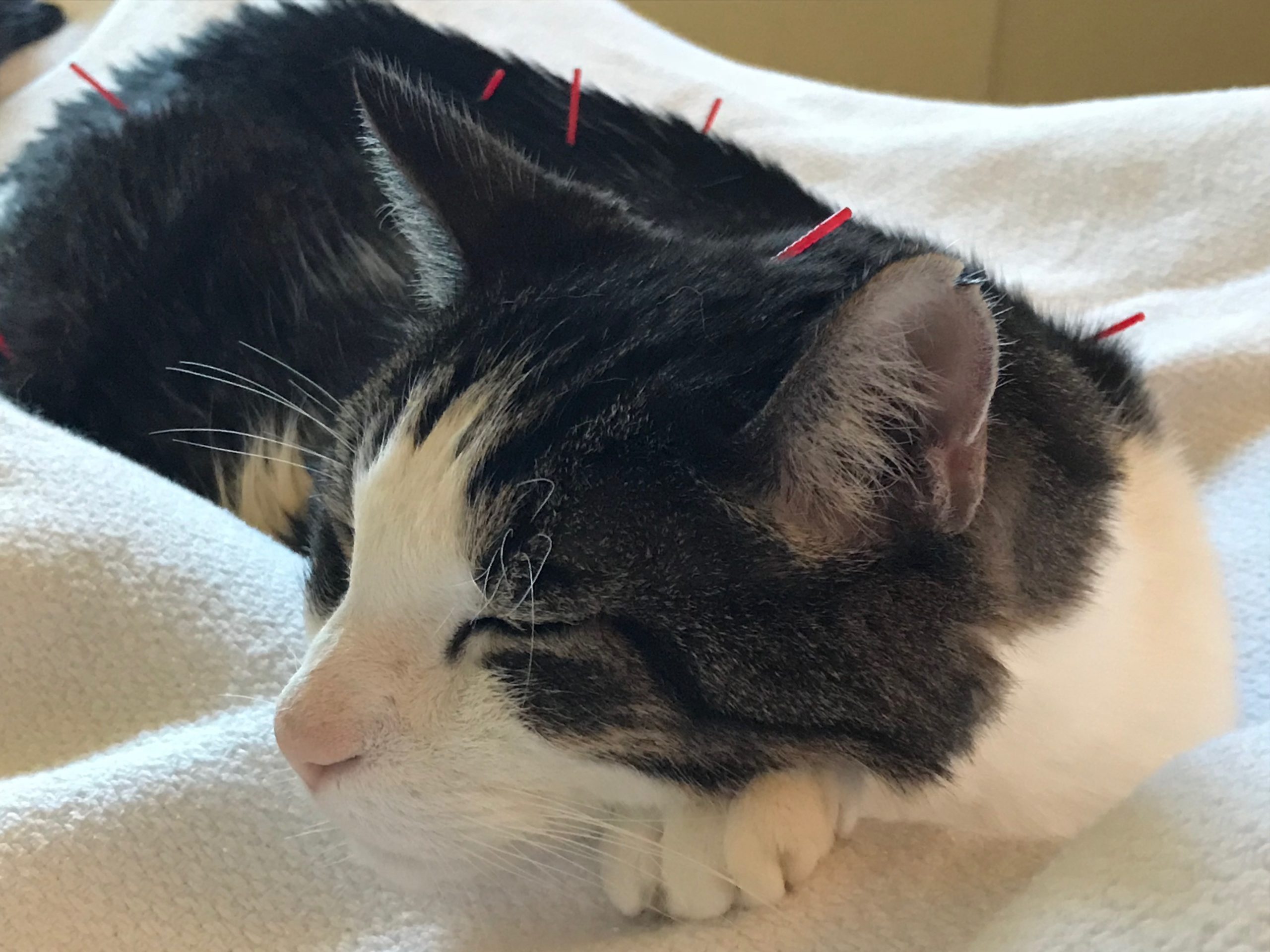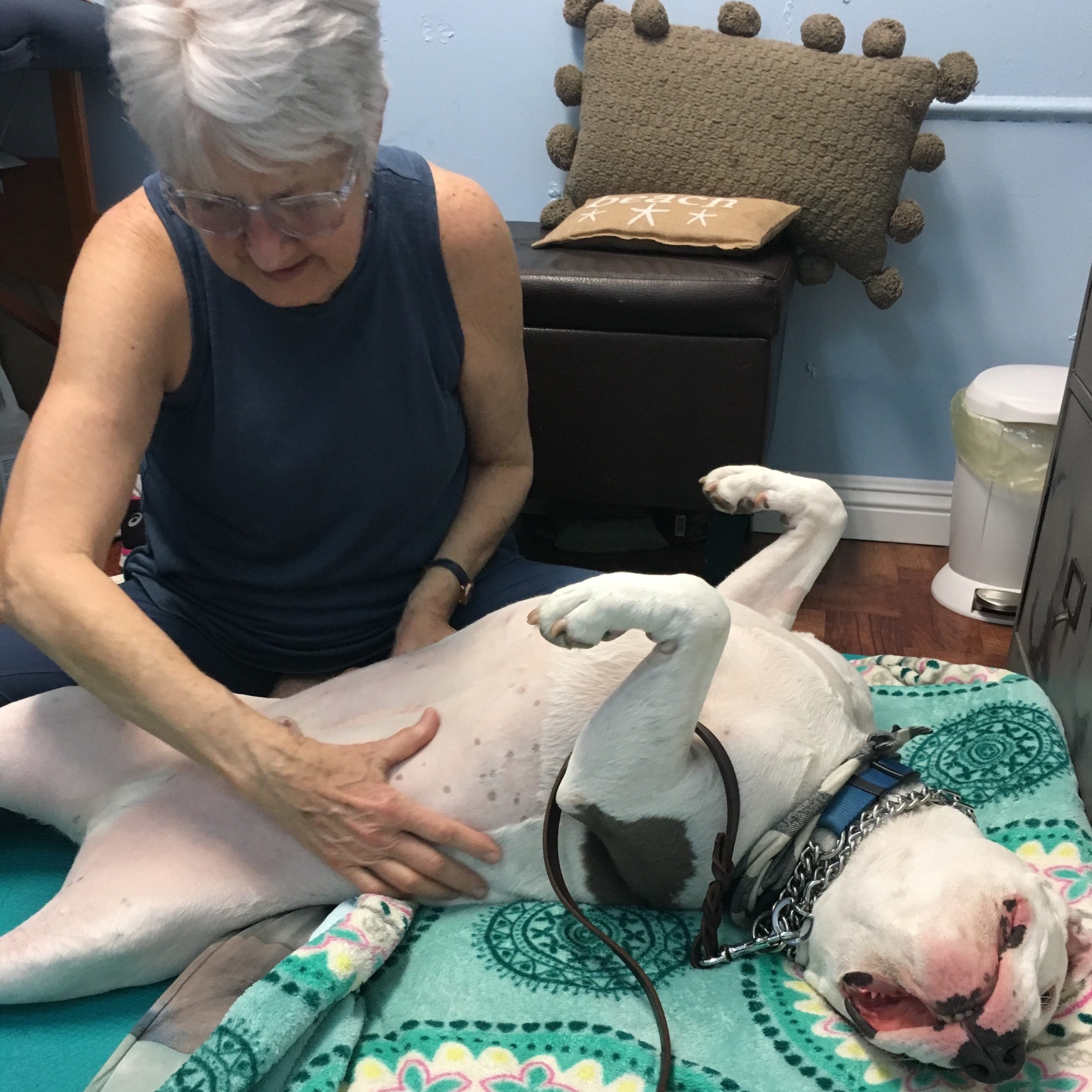As part of our alumni Q&A series, we sat down with MSTCM and DAOM graduate, Dr. Ella Woods, L.Ac. Aside from working with human patients, Ella dedicates a significant portion of her time working with animals. From Medical Qi Gong to needling acupuncture points, her animal patients have benefited greatly from her treatments and enjoy them! This week, Ella shares with us what she’s been up to since graduating from ACTCM, her experience with a unique TCM patient base, and advice for TCM practitioners interested in working with pets.

What was your first job after graduating from ACTCM?
San Francisco Veterinary Specialists for two days a week. I had no guaranteed income, but no costs either. This gave me a small income so that I could survive the slow growth of the patient base in my human practice. For someone who was so interested in animal acupuncture, this was a godsend! It is a highly regarded Specialist practice and Emergency Hospital, so it was quite a coup to win a position there, and I am indebted to my mentors, Lisa Pesch, DVM; and Alan Stewart, DVM and Internal Medicine Specialist for advocating for me. Before even starting my MSTCM, I knew that working with animals was all I wanted to do. So, throughout my MSTCM program I’d followed Dr. Pesch one day a weekd at SFVS. Currently, I split my time 3-4 days a week with humans and 1-2 days a week with animals.
Any advice for current students or alum who are interested in working with animals?
You have to learn to lose your ego. If you succeed in getting to practice in a veterinary practice, you will be a satellite figure, not the star, and you will have to constantly reassure any/all DVMs you work with that you are not trying to give western medical advice nor practice western veterinary medicine. In fact, knowing when to refer the patient back to the DVM is far more sensitive and important than with our human patients. You don’t want to treat a dog for low-grade-seizure-like episodes when he actually has a tumor of the pancreas that is causing the seizure-like episodes.
Build a network, get to know DVMs, ask to spend time following them in their practice, and then be a silent fly on the wall. They don’t have time to answer your questions while they are seeing patients, they don’t need you to chat up the clients. If you spend enough time following, keeping your mouth closed, listening and observing, you will be amazed at what you learn over time. And during that time, they are getting comfortable with you, and may someday hire you too!

What has been the most challenging thing about starting your own practice?
Initially, it was attracting new patients. But eventually the challenge became finding the best patients for me. Finding patients that fit my style, my philosophy, and my temperament. I also quickly realized that there are plenty of patients to go around.
So, if someone is not a good fit for me, both my patient and I benefit from my efforts to help them to find someone who is right for them. I am lucky to have wonderful TCM colleagues in Pacifica that I am totally comfortable referring patients to when needed.
What made you want to go back to pursue the DAOM?
I had finished my masters in 2005 and working in a field (Veterinary Medicine) where everyone else had doctorates. I knew it would elevate my credibility if I had a doctorate. The DAOM program wasn’t possible without the MSTCM, but the MSTCM was getting all the required courses for a major, all the grunt work. And then the DAOM feels more like senior year where you focus your time with seminars and discussions. I felt the level of my learning was much greater in the doctoral program. I was very young as a clinician when I joined the DAOM program, but to be in a class with people who had practiced 15-20 years was an amazing experience.
We’d break up into groups and discuss patient cases. It was mind blowing to see the different ways different groups would approach a treatment, even though diagnoses were very similar. “One disease, many treatments. One treatment, many diseases.” There are so many ways to treat a disorder, and you don’t always have to treat it the way everyone else does. There was a lot more ambiguity and possibility, and you saw so many more facets to this medicine. My doctoral experience at Yue Yang Hospital in Shanghai also greatly underscored this.

What is your fondest memory from your time at ACTCM?
Studying for exams! Though it felt perfectly miserable at the time. I have wonderful memories of sitting around my place or at one of my study-team’s apartments, all with Si Shen Cong needles in, going over material and comparing interpretations.
Favorite herb or acupuncture point and why?
Huang Qi is such a friendly, multi-purposed herb. It has anti-neoplastic properties in high doses, generates and raises Qi, relieves numbness & pain, treats Xiao Ke syndrome, tonifies and regulates Wei Qi (far-reaching ramifications), regulates water circulation and treats edema.
For animals, my favorite acupuncture point is UB 23, because everybody’s kidneys can use a little help. For humans, I love ST36 – it’s the kitchen sink of acupuncture points!
Dr. Ella Woods practices acupuncture in the Bay Area and works with both humans and animals. You can learn more about her practices below:
Click here to view upcoming ACTCM events.
About American College of Traditional Chinese Medicine
American College of Traditional Chinese Medicine (ACTCM) has provided affordable, quality health care to the public and trained professionals in acupuncture, massage and Chinese medicine since 1980. In addition to its graduate curriculum, ACTCM offers continuing education, public education, community outreach and clinical services in acupuncture and herbal medicine. ACTCM has been the recipient of many awards for its curriculum, faculty and clinic, and has been voted “Best of the Bay” by both the San Francisco Weekly and the San Francisco Bay Guardian. ACTCM is accredited by the Accreditation Commission for Acupuncture and Oriental Medicine and is a private, nonprofit, 501(c)(3) tax-exempt organization